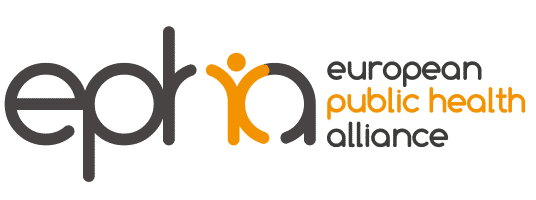By Sascha Marschang, Policy Manager for Health Systems, EPHA
A recent conference in London, ’Antibiotics and Farming: Prescriptions for Change’ organised by the Alliance to Save our Antibiotics and Medact, explored the link between farming practices and drug-resistant infections in humans and animals. The event was timely in light of the ongoing discussions about new EU legislation on Veterinary Medicinal Products and the so-called Animal Health law.
Conference highlights
John Blackwell, from the British Veterinary Association, explained that antibiotics are used for a number of purposes in animals including curative treatment or therapy, metaphylaxis (control treatment), and prophylaxis (preventative treatment, before a bacterial disease shows). The latter should only be used in high-risk circumstances and upon prescription by a veterinarian. Crucially, prophylaxis should never be applied systematically or routinely, and it must not compensate for poor hygiene or inadequate animal husbandry practices. He stated that, from a vet perspective, it is important to challenge misconceptions and introduce stricter controls for antibiotics, which are of critical importance in human medicine. In Britain various actions are underway to make vets more accountable – however it remained vital that behavioural change comes from within the profession, which required education and closer relationships with the animal health community.
Coilin Nunan (Alliance to Save our Antibiotics) highlighted that most AMR studies showed a clear link between animal and human health. There is increasing evidence that cutting antibiotics’ use in farming works: The Netherlands successfully reversed the trend of livestock-associated human cases of MRSA by reducing antibiotics in farming. He also stressed that broad-spectrum fluoroquinolones should not be used in poultry due to their high importance in human medicine. Imports of poultry meat have been cited as a reason for increases in resistance – confirmed in a recent report by EFSA and ECDC – yet the EU continues to do it.
Prof Tim Walsh (Cardiff University) talked about the growing threat of pan-drug resistance, especially given recent findings in China regarding colistin resistance in humans following widespread use in animal feed. Intensive farming takes place on a different scale in many parts of Asia; growing demand for poultry is contributing to the problem. It is important to devise exit strategies that work, to involve the media and take account of cultural specificities.
From a food systems perspective, Tara Garnett, from the Food Climate Research Network, cautioned that the current situation is unsustainable and is causing environmental problems including water pollution, deforestation, and species loss. Livestock production is central to these ’bads’: 70% of diseases are zoonotic, and antibiotics are widely used to meet rising demand for meat consumption. Intensive farming combined with complex, international supply chains creates new opportunities for AMR to spread. . Huge emissions accompany each step of the food system, and the shift from ruminant to more efficient monogastric animals (e.g. poultry), combined with an increasing array of retailing formats is contributing to the problem. She concluded that food and health are linked in complicated ways; environment, food security, infections, diseases, health equity are intertwined. Yet it is a political choice as food can be produced and consumed differently. But this is not easy to achieve due to cultural and economic concerns.
Dr Hetty Van Beers, Dutch Veterinary Medicine Authority explained that a shift in the Dutch policy on the use of antibiotics in farming was the result of growing consumer and political pressure triggered by outbreaks of infectious disease. The Dutch model is characterised by intersectoral communication and clear responsibilities. The Ministries of Health and Agriculture are collaborating, the Health Council issues recommendations, and a covenant with private parties helps ensure transparency of antibiotics’ usage on farms. Other tools deployed include benchmarking, creating one-to-one relationships between vets and farmers, and ambitious reduction goals and thresholds set by the government, supported by legislation.
Dr Jenny Lundstrom (ReAct) recalled that Sweden was the first country to ban antibiotics as growth promoters 30 years ago, and it continues to have the lowest use in the EU animal sector. Improving animal health must involve good animal husbandry, biosecurity, and prudent use. Farmers, vets and governmental bodies need to cooperate closely to achieve change. Sweden has introduced improved hygiene and management routines; vet guidelines on prudent use; mandatory pre-evaluation of farm building plans; and disease control programmes with economic incentives for farmers. Antibiotics are only available by prescription and there is no economic incitement for vets to hand out or sell them. Surveillance of antibiotic sales and of AMR is also crucial.
Relevance to EPHA campaign on AMR
The conference offered a number of interesting questions for EPHA to follow up on during its own Annual Conference on 8 September 2016, and as part of its AMR campaign:
- Can the Dutch and Swedish models be transferred to other EU countries? What policies need to be in place to achieve similar results and change prescribing/consumption behaviours?
- What are the limitations of the One Health concept? Is it sufficiently clear or is it ambiguous?
- What issues need to be addressed regarding incentives for vets? How are incentives linked to the organisation of the health system?
- What are good practices of infection control and antimicrobial stewardship?
